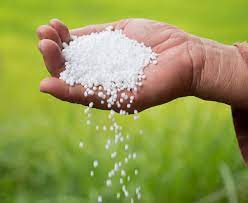London November 5 2023: Russia and Saudi Arabia will continue with planned voluntary oil supply cuts up to the end of 2023, officials said Nov. 5.
The announcements come amid growing supply concerns, as a result of OPEC+ output policy and concerns that the Israel-Hamas war could impact production and supply in the Middle East.
Saudi Arabia will continue its voluntary cut of 1 million b/d in December 2023, the Saudi Press Agency reported Nov. 5, citing an official source in the energy ministry.
“Thus, the kingdom’s production in the month of December 2023 will be approximately 9 million barrels per day,” it said.
Russia will maintain its 300,000 b/d crude oil and oil products export cut to the end of 2023, deputy prime minister Alexander Novak said Nov. 5.
Russia and Saudi Arabia said that the voluntary cut decision will be reviewed next month to consider deepening the cut or increasing production.
They said that the cut reinforces the precautionary efforts made by OPEC+ countries with the aim of supporting the stability and balance of oil markets.
Russia introduced voluntary supply cuts in the spring of 2023 after sanctions were introduced on the Russian oil sector in response to Russia’s invasion of Ukraine. Other OPEC+ producers, including Saudi Arabia, then added their own voluntary cuts. The first round of voluntary cuts totaling 1.66 million b/d, is currently in place until the end of 2024. Russia and Saudi Arabia then added further voluntary cuts, including Russia’s 300,000 b/d, which are in place to the end of 2023.
Ukraine invasion
Russia is cutting production and seeking high oil prices as it grapples with significant costs related to its invasion of Ukraine. Officials said previously that the cuts aimed to reduce the discount on Russian crude driven by sanctions. At times, since Russia invaded Ukraine, the discount has been over $40/b. The differential has since narrowed, with Platts assessing Russia’s key crude grade Urals at a discount of $12.10/b to Dated Brent on Nov. 3. Platts is part of S&P Global Commodity Insights.
Russia’s seaborne crude exports have risen in recent months, despite its crude continuing to trade above a G7 price cap imposed as part of sanctions.
Its seaborne crude exports were at a four-month high of 3.53 million b/d in October, up 7.4% on the month according to tanker-tracking data from S&P Global Commodities at Sea.
Meanwhile, Russian oil product exports were down 190,000 b/d on the month to 2.12 million b/d in October – a 17-month low, according to the data.
Russia’s crude production continues to be below pre-invasion levels. It stood at 9.43 million b/d in September, according to the latest Platts OPEC+ survey by S&P Global Commodity Insights, down from 10.11 million b/d in February 2022 when it invaded Ukraine.
In mid-September, Novak said that Russian crude and condensate production would total 527 million mt, equivalent to around 10.58 million b/d, in 2023. This is down from 535 million mt, equivalent to around 10.74 million b/d, in 2022.
Analysts see Russian output remaining steady through the end of 2023, as it and its OPEC+ counterparts maintain production discipline to support prices.
Risks to supply have increased over the last month after Hamas attacked Israel Oct. 7. The conflict triggered calls for an oil export embargo from some Middle East producers, and ongoing fighting threatens oil production and supply infrastructure. Meanwhile talks between Western officials on sanctions have intensified.
“Oil market fundamentals do not currently point to a supply crisis, although the risks of a supply disruption are greater now than on Oct. 6,” S&P Global Commodity Insights said in a global crude oil markets short term outlook released Oct. 27.
OPEC+ ministers are next due to discuss market conditions and production quotas at a meeting scheduled for Nov. 26.










